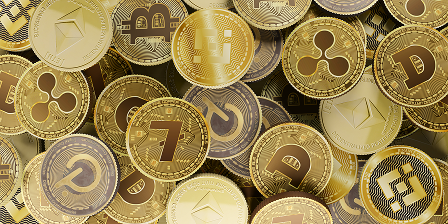Blockchain and its Role in the World of Cryptocurrencies
February 20, 2025
So what is the blockchain that powers the entire cryptocurrency world? At PayPilot Academy we came up with the idea of comparing it with a giant Google Doc that is constantly updated and available to all participants. But unlike a regular document, it is almost impossible to change information in the blockchain. Each record is protected by cryptography and linked to all previous records, creating a secure and transparent chain.
Thanks to blockchain, cryptocurrencies have become more secure and accessible. Now everyone can send and receive payments without intermediaries such as banks.
Blockchain is not only the basis for cryptocurrencies. Its capabilities are much wider. For example, in the field of logistics, blockchain allows you to track the path of goods from manufacturer to buyer, excluding counterfeits. Every step of the journey is recorded on the blockchain, creating a transparent and immutable product history. This is especially useful for expensive items such as medicines or luxury goods.
This technology has been successfully used in healthcare to securely store medical records, in finance to ensure transparent transactions, in government to conduct fair elections, and in many other areas.
Each block in the blockchain is a kind of page in this huge book. Each block stores certain information:
- Creation time: When a block was added to the chain.
- Transaction data: A list of all operations that have occurred since the creation of the previous block.
- Hash of the previous block: A unique code that links the new block with all previous ones.
This hash is the key to the security of the blockchain. If someone tries to change the data in one block, its hash will change and all subsequent blocks will become invalid.
Block chain: an unbreakable structure
All blocks in the blockchain are connected to each other in a chain. Each new block is added to the end of the chain and references the previous block through its hash. This creates an unbreakable data structure that is very difficult to change.
Why is it so difficult to change the blockchain?
- Decentralization: Copies of the blockchain are stored on thousands of computers around the world. To change data, you need to change it on all computers at the same time, which is almost impossible.
- Cryptography: Each block is protected by cryptographic algorithms that make it virtually impossible to hack.
- Consensus: In order to add a new block to the chain, it is necessary to reach agreement between all network participants.
Mining: creating new blocks
Mining: This is the process of creating new blocks in the blockchain. Miners use powerful computers to solve complex mathematical problems. The winner gets the right to add a new block to the chain and a reward in the form of cryptocurrency. Mining strengthens the security of the network by requiring significant computing resources and making it unprofitable for attackers to change data.
Consensus: This is a mechanism for agreement between network participants regarding the state of the blockchain. There are various consensus algorithms. Proof of Work (PoW), used in Bitcoin, is based on solving complex problems and requires large computing power. Proof of Stake (PoS) – a more energy efficient alternative where participants “stake” their coins to gain the right to add blocks.
These two concepts are closely related. Mining is the practical implementation of consensus algorithms that ensure the security and decentralization of the blockchain. The choice of algorithm affects transaction processing speed, energy consumption and other network characteristics.
The choice of consensus algorithm has a significant impact on the operation of the blockchain:
- Safety: Some algorithms are more resistant to attacks than others.
- Scalability: Some algorithms can process more transactions per second.
- Decentralization: Some algorithms can lead to the concentration of power in the hands of a small number of network participants.
Understanding how blockchain works will give you a better understanding of the world of cryptocurrencies and other decentralized technologies.
Bitcoin: Blockchain Pioneer
Bitcoin was the first and most famous implementation of blockchain technology. Created by Satoshi Nakamoto (whose identity remains a mystery), Bitcoin was introduced in 2008 as a white paper. The goal was to create a digital currency independent of centralized authorities.
Bitcoin has clearly shown how blockchain works in practice and what benefits it can provide. The success of Bitcoin has attracted the attention of investors, developers and the general public to blockchain technology. A whole ecosystem of companies and projects has emerged around Bitcoin, developing various blockchain-based applications.
Blockchain Limitations
Despite all its advantages, blockchain technology has its limitations:
- Scalability:
- Problem: Many blockchains, especially those based on Proof of Work (PoW) algorithms like Bitcoin, face scalability issues. As the number of users and transactions increases, transaction processing speed decreases and fees increase.
- Reasons: Network capacity limitations, difficulties in achieving consensus between all network nodes.
- Power consumption:
- The high power consumption caused by complex calculations in the process of mining cryptocurrencies using the PoW algorithm is a significant problem for this technology.
Blockchain and cryptocurrencies are inextricably linked. It is thanks to blockchain technology that the creation of decentralized digital currencies has become possible. Blockchain provides transaction security through cryptographic protection, transparency through a public ledger, and decentralization through the absence of a single control center. In turn, the rapid development of cryptocurrencies stimulates the constant improvement of the blockchain, especially in the areas of scalability and energy efficiency. Bitcoin, Ethereum and other cryptocurrencies have become pioneers in this area, demonstrating the technology’s enormous potential.



